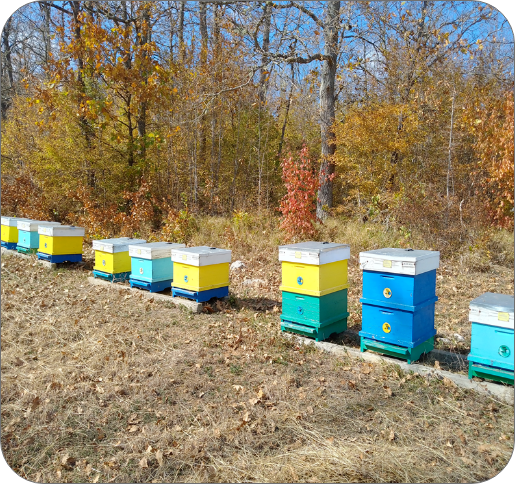
Contact person:
Dimitar Stanchev
researcher agroforestry at Inargo

Living Lab 3: Bulgaria
Managed by: Bee farm Strandzha
General information
The Living Lab farm is located in the south-eastern part of Bulgaria, in the low-mountain region of Strandzha, and is surrounded by deciduous forests. The average altitude is 297 m. The farmer owns part of the cultivated land and forests, and another part is leased.
Farm owners are motivated to use agroforestry practices because of the opportunity to produce clean, natural food and preserve biodiversity and soil fertility. Their main product is a special kind of honey, which is produced by certified organic apiaries. The honey is processed in their own automatic unsealing line and automatic centrifuges, with no contact with the human hand. Other products are walnut and hazelnut tahini and functional foods based on honey.
Another goal of the farmers is to conserve the donkey population in the area.
A primary motive in their work is the restoration and development of the region and local communities.
General farming approach
Integrated farming with a tendency towards organic farming.
The bees in the farm are certified for organic production.
Objectives
The main objective is to produce organic honey, grains, and vegetables.
Challenges
- Lack of manpower;
- Climatic changes – drought, uneven distribution of precipitation during the growing season.
Research goals
Periodic monitoring of biodiversity and soil condition.
Design of the agroforestry system
The main agroforestry system is forest farming – bee hives in forest glades. At the moment farm have 16 apiaries, at a distance more than 2 km each other, to ensuring sufficient bee pasture for bees from each apiary.
Monitoring
 Loading...
Loading...

Bulgaria

8 ha pasture (silvopastoral farming); 16 apiaries located in open areas in deciduous forest

Silvoarable, forest farming

Arable & horticulture

Established in 2009

Vegetables - mainly onions, potatoes
Field crops - wheat, barley, oats, maize, sunflower

Livestock: Yes (donkey; horses; sheep and goats; chickens, turkeys, rabbits, geese, quails)







